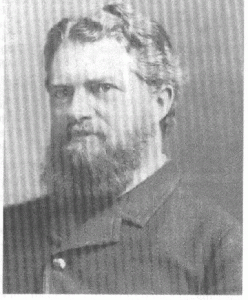Visiting Astronomers:Baily, Francis |
||
Mason and DixonTwo English Astronomers, Charles Mason and Jeremiah Dixon were on their way to Bencoolen in Sumatra to observe the 1761 transit of Venus. Their ship was delayed so they did their work at Cape Town instead. The transit was successfully observed from Concordia Gardens, a social club that used to be behind St Mary’s Cathedral in Cape Town. In 1772 Wales and Baily used the same site to do observations in Cape Town. Mason and Dixon, became well known for their land survey between Maryland and Pennsylvania (U.S.A.), known as the “Mason and Dixon line”. This line was surveyed to settle legal squabbles between the two states. During the American Civil War this line came to represent the dividing line between the slave owning and non-slave owning states (Confederates and Yanks) Mason, Charles:Dixon, Jeremiah:Sources: – Mason and DixonRemaining Artefacts: Bibliography: |
||
Wales and BailyTwo English Astronomers, William Wales and Francis Baily accompanied Captain Cook on his second voyage in 1772. They set up their telescope in Concordia Gardens, a social club that used to be behind St Mary’s Cathedral in Cape Town-close to the spot used for this purpose by Mason and Dixon. Wales, William:Baily, Francis:Also known as Bayly Famous for:
Sources: – BailyRemaining Artefacts: Bibliography: |
||
Elkins W L (later Dr.)Elkins was an American student who stayed in Strasbourg. He came to Cape Town in January 1881 to pay Sir David Gill a short visit. He ended up staying for 2 years and 4 months. He helped Sir David Gill with heoliometer parallaxes measurements of nine southern stars, including Alpha Centauri. (Pioneering work as this was the first ever systematic measurement).Elkins worked with the Dun Echt Heliometer. Sources: – ElkinsBibliography: |
||
Johnson ManuelJohnson: Manuel John Sources: – ManuelBibliography: |
||
Newcomb Simon (Prof)1835 – 1909 Newcomb was an astronomer at the US Naval Observatory (USNO), and became the most honoured American astronomer of the 19th century – a crater on the Moon was even named after him. With the 1882 Transit of Venus America decided to send an expedition under the leadership of Newcomb to South Africa. Gill originally suggested Beaufort West as an observing site. When Newcomb heard about the American connection with the Huguenot Seminary at Wellington he decided to go there instead. At Wellington Newcomb’s party had fine weather and reported after the Transit that “all our observations were successful”. William Harkness reduced the observations and obtained a value very close to the accepted modern value. However, Newcomb (as well as Gill) were early critics of the Transit of Venus method to determine the Sun-Earth distance. He also spent a large proportion of his career studying the motion of the Moon and measuring the speed of light. In 1896 he adopted an extensive system fo astronomical constants, which was still in use well into the twentieth century. Newcomb received the Bruce Medal in 1898.
Bibliography: |
||

